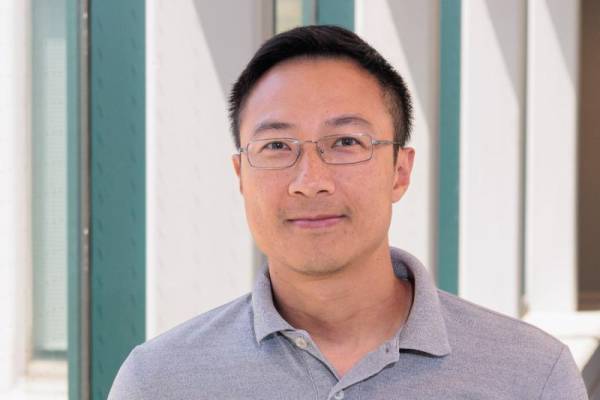Cognitive Science Professor Yang Xu Finds ‘Unified Foundation’ of Word Meaning in Child Language Development and Language Evolution
University College Cognitive Science professor Yang Xu and a team of researchers are using computer science to explore the knowledge foundation of word meaning in both child language development and the evolution of word meanings across languages.
Through a computational framework they developed, they show how patterns of children’s language innovation can be used to predict patterns of language evolution, and vice versa.
This interdisciplinary work, done in collaboration with computational linguistics and cognitive science researchers from Universitat Pompeu Fabra and ICREA in Spain, is outlined in a recent paper, “From language development to language evolution: A unified view of human lexical creativity,” published in Science.
In the paper, Professor Xu and the team investigate word meaning extension, which is the creative use of known words to express novel meanings. The research aimed to look at how this type of human lexical creativity observed in both children and adult language users can be understood in a unified framework, says Professor Xu, who is senior author on the paper and an associate professor in the Department of Computer Science .

“A common strategy of human lexical creativity is to use words we know to express something new, so that we can save the effort of creating new words,” Xu explains. “Our paper offers a unified view of the various processes of word meaning extension observed at different timescales, across populations and within individuals.”
Word meaning extension is often observed in the historical change or evolution of language, Xu points out. For example, the word ‘mouse’ in English extends from its rodent meaning to refer to a portable computer device.
On the other hand, word meaning extension is also observed in children as early as two years of age. For example, children sometimes use the word ‘ball’ to refer to ‘balloon,’ presumably because they haven’t yet acquired the right word to describe ‘balloon,’ so they overextend the known word ‘ball’ to express that new object, Xu adds.
— Professor Yang XuThere is a shared repertoire of knowledge types that underlies word meaning extension in both language evolution and language development.
“In this study, we ask whether processes of word meaning extension at two very different timescales, in language evolution, which takes place over hundreds or thousands of years, and in child’s language development, which typically occurs in the order of months or years, have something in common with each other. Our hypothesis is that these processes are fundamentally the same.”
“We find, indeed, there’s a unified foundation underlying these processes. There is a shared repertoire of knowledge types that underlies word meaning extension in both language evolution and language development,” Xu notes.
To test their hypothesis and to figure out what is in common between products of language learning and language evolution, the team built a computational model that takes pairs of meanings or concepts as input, such as ‘ball’ versus ‘balloon’, ‘door’ versus ‘key’ or ‘fire’ versus ‘flame,’ and makes a prediction about how likely these concepts can be co-expressed under the same word.
In building this model, the researchers constructed a knowledge base that helps identify similarity relations between concepts as they “believe it is the key that makes people relate meanings in word meaning extension,” Xu says.
The knowledge base consists of four primary knowledge types grounded in human experience: visual perception, associative knowledge, taxonomic knowledge and affective knowledge. Pairs of concepts score high if they are measured to be similar in one or some of these knowledge types.
“The pair of concepts like ‘ball’ and ‘balloon’ would score high due to their visual similarity, whereas ‘key’ and ‘door’ would score high because they are thematically related or often co-occur together in daily scenarios,” Xu explains. “On the contrary, for a pair of concepts such as ‘water’ and ‘pencil,’ they would have little similarity measured in any of the four knowledge types, so that pair would receive a low score. As a result, the model would predict they can’t, or they are unlikely to extend to each other,” he explains.
Xu notes the team found all four knowledge types contributed to word meaning extension and a model that incorporates these types tends to better predict data than alternative models that rely on fewer or individual knowledge types.
“This finding tells us that word meaning extension relies on multifaceted and grounded knowledge based on people’s perceptual, affective, and common-sense knowledge,” he says.
The model, built exclusively from children’s word meaning extension data, can successfully predict word meaning extension patterns from language evolution and can also make predictions in the reverse direction on children’s overextension when trained on language evolution data.
“This cross-predictive analysis suggests that there are shared knowledge types between children’s word meaning extension, and the products of language evolution, despite the fact that they occur at very different timescales. These processes both rely on a common core knowledge foundation — together these findings help us understand word meaning extension in a unified way,” says Xu.
Xu points out that existing research on child overextension has been typically discussed in the context of developmental psychology whereas word meaning extension in history is typically discussed in historical and computational linguistics, so this project aims to build a tighter connection between these two fields of research.
“By building this connection, we find a core knowledge engine that supports lexical creativity in word meaning extension, which is fundamentally important to human cognition and linguistic communication of emerging meanings,” he explains.
The researchers hope that additional computational modelling will shed light on other potential lines of inquiry, including the basic mechanisms at play in the historical evolution of word meanings and the emergence of word meanings in child development, as well as the origins of different semantic knowledge types and how they are acquired.